Small living rooms can feel challenging to decorate and organize. With limited square footage, you need smart solutions that maximize both style and function without overwhelming the space.
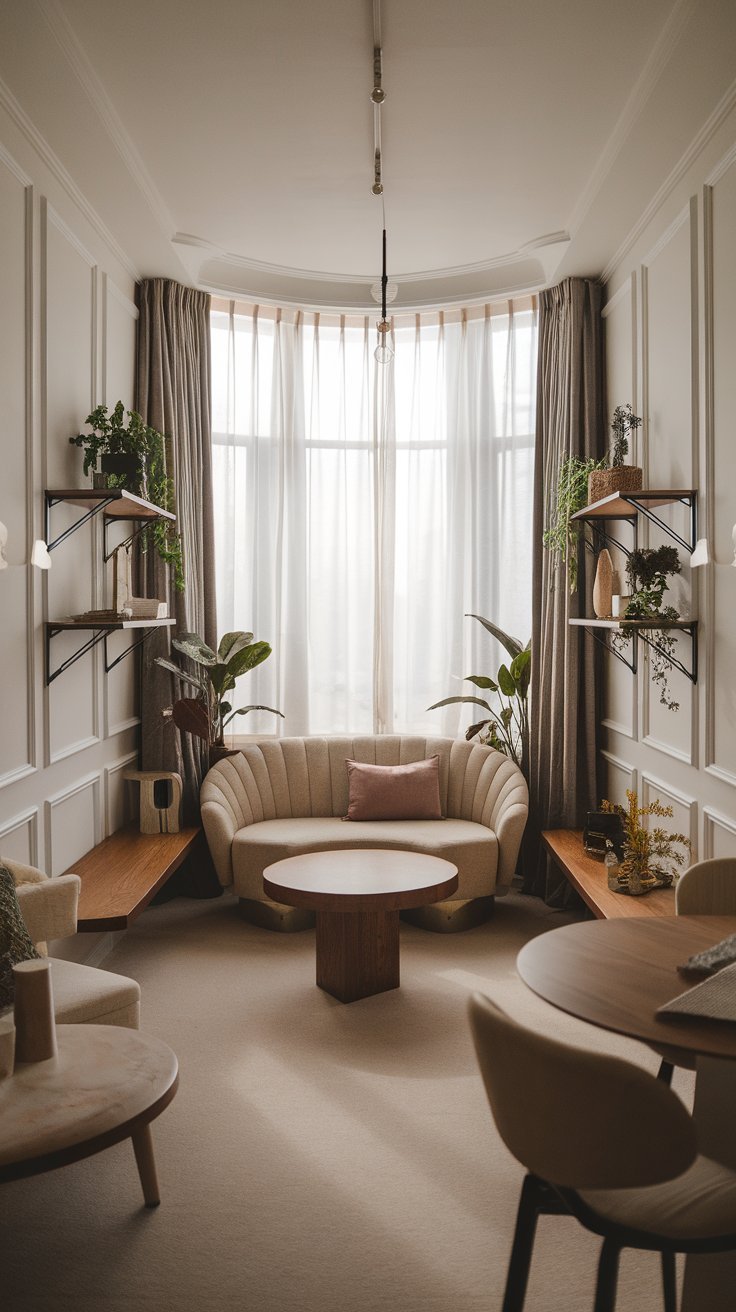
The key to successful small living room design is combining space-saving furniture with strategic layouts that make the most of what you have. You don’t need to sacrifice comfort or personal style just because your living area is compact. These ideas will help you transform your small space into a cozy, well-designed retreat.
1) Opt for a neutral color palette to make spaces feel larger
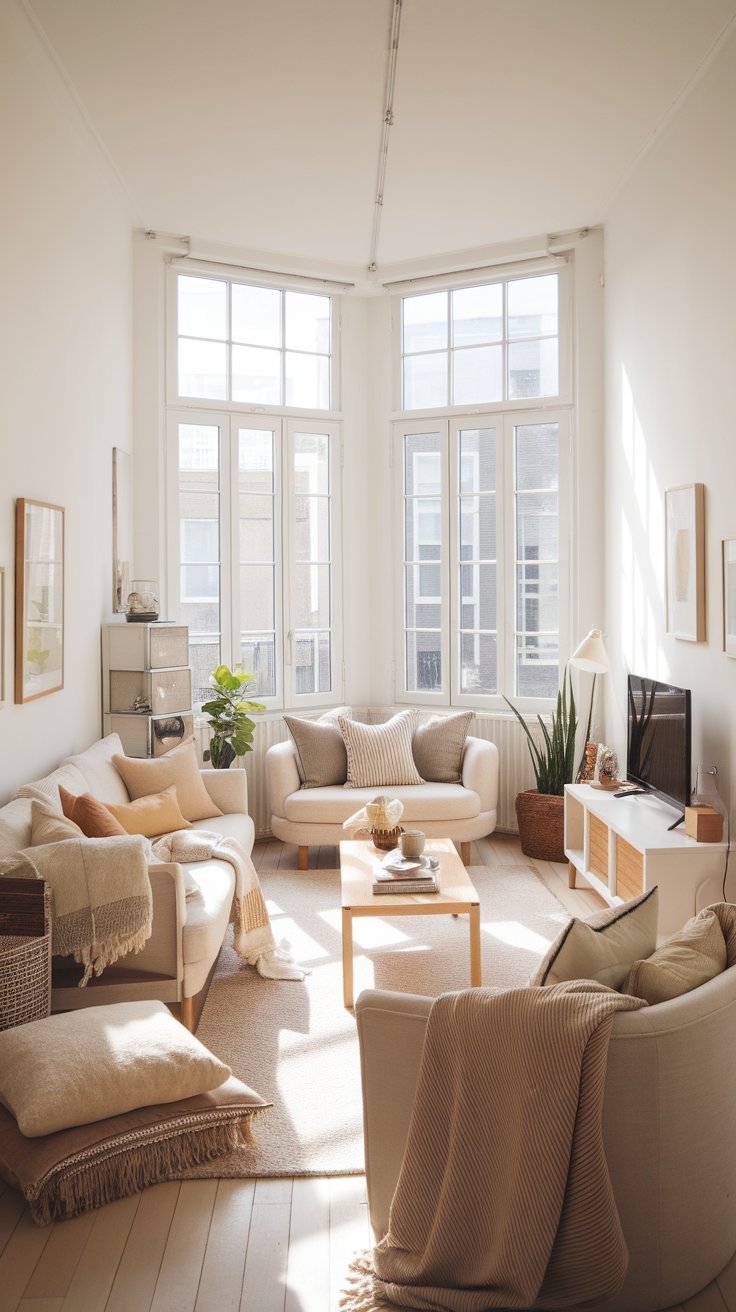
Using neutral colors in your small living room creates the illusion of more space. Whites, beiges, light grays, and pale yellows reflect light rather than absorbing it, making the room feel airier and more open.
These lighter shades also provide a timeless foundation that works well with any decorating style. You can easily update the look by changing accessories rather than repainting the entire room.
For added interest, consider incorporating subtle texture through fabrics and materials. This adds depth without overwhelming the space.
If you prefer some color, try soft pastels like pale blues, greens, or pinks. These work as neutrals while still providing a whisper of color to keep the space from feeling too stark.
2) Use mirrors strategically to create the illusion of space
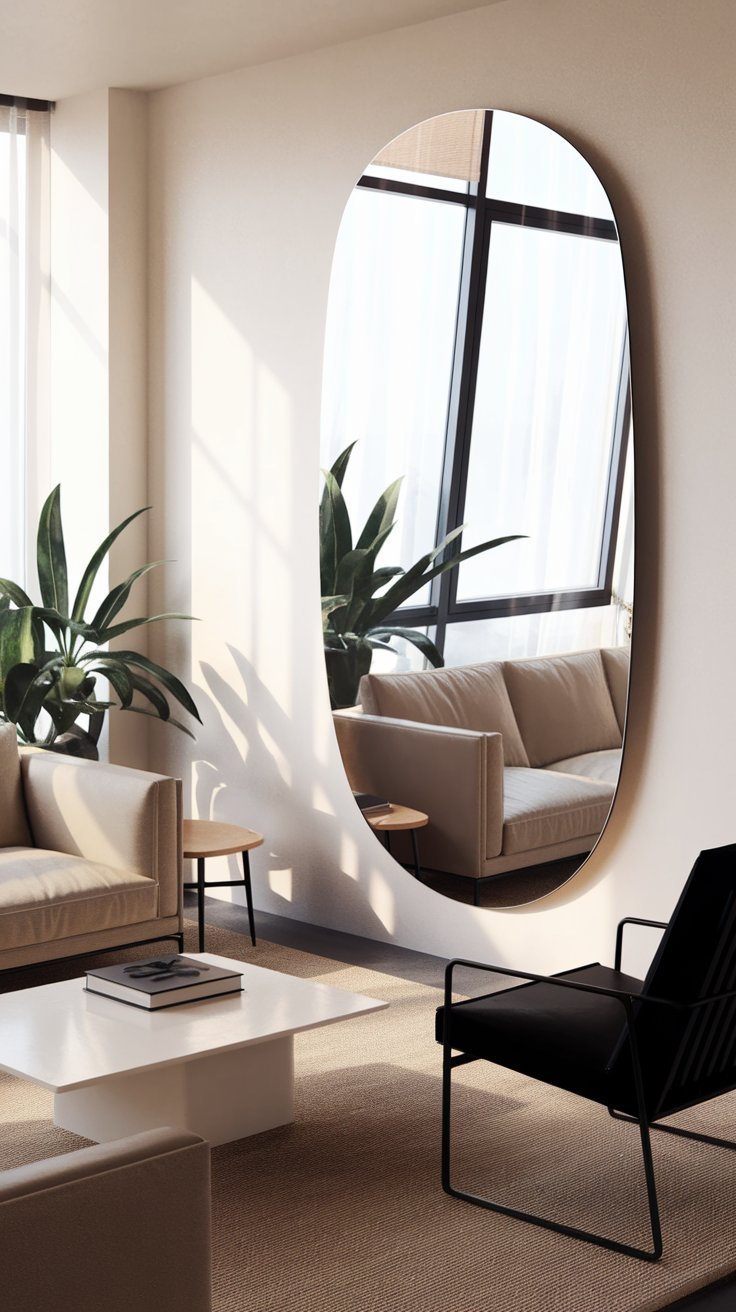
Mirrors are powerful tools for making small living rooms feel larger than they actually are. By reflecting light and views, mirrors create depth and openness in tight spaces.
Place a large mirror on a wall opposite a window to bounce natural light around the room. This brightens the space and makes it feel airier.
Try positioning mirrors where they’ll reflect nice views or interesting decor pieces. This doubles the visual impact of your design elements.
Mirrored furniture like coffee tables or cabinets can add function while creating the same space-enhancing effect. Just be careful not to overdo it—too many mirrors can feel disorienting.
3) Select multi-functional furniture like a storage ottoman
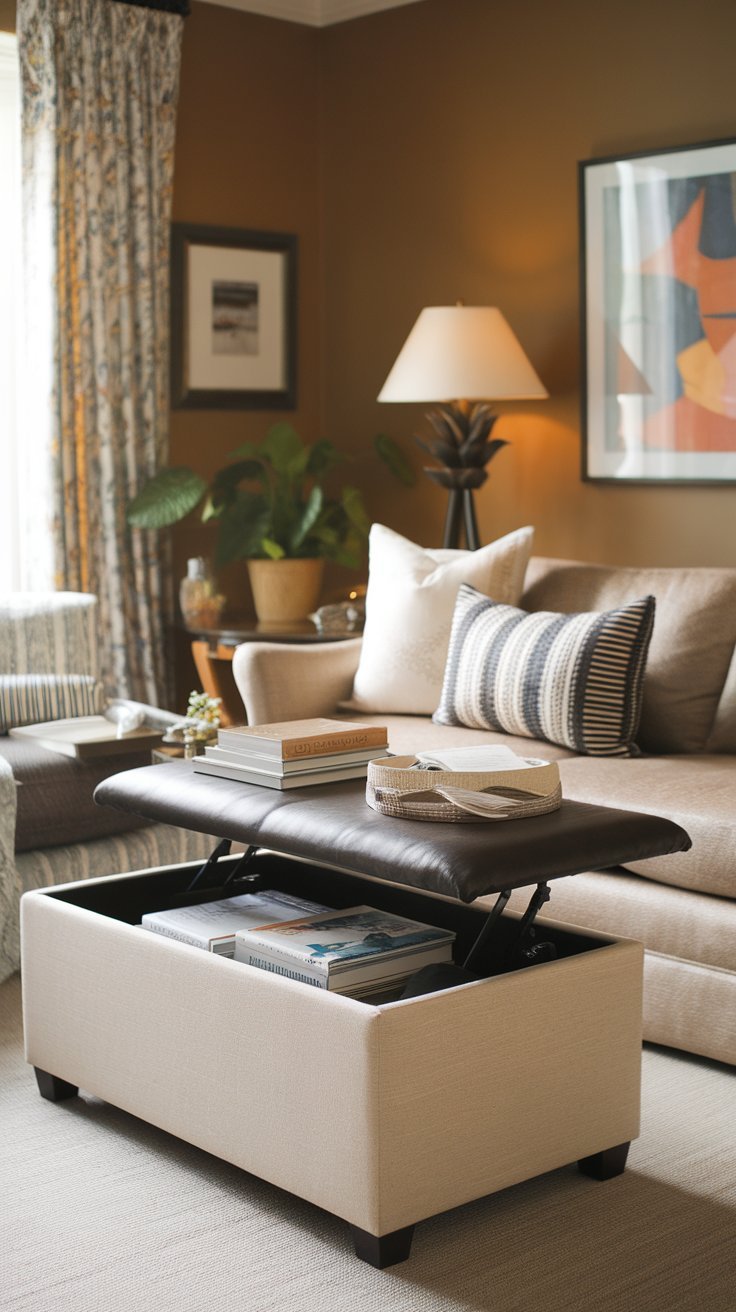
When space is limited, each piece of furniture should serve multiple purposes. A storage ottoman is perfect for small living rooms because it can function as seating, a footrest, or even a coffee table.
The interior compartment gives you hidden storage for blankets, books, or game controllers. Some ottomans even convert into beds for overnight guests.
Look for lidded woven ottomans that complement your style while providing functionality. Prices range from affordable options around $67 to higher-end pieces at about $1,200.
This smart furniture choice helps maximize your limited square footage without sacrificing comfort or style.
4) Incorporate vertical shelving to maximize wall space
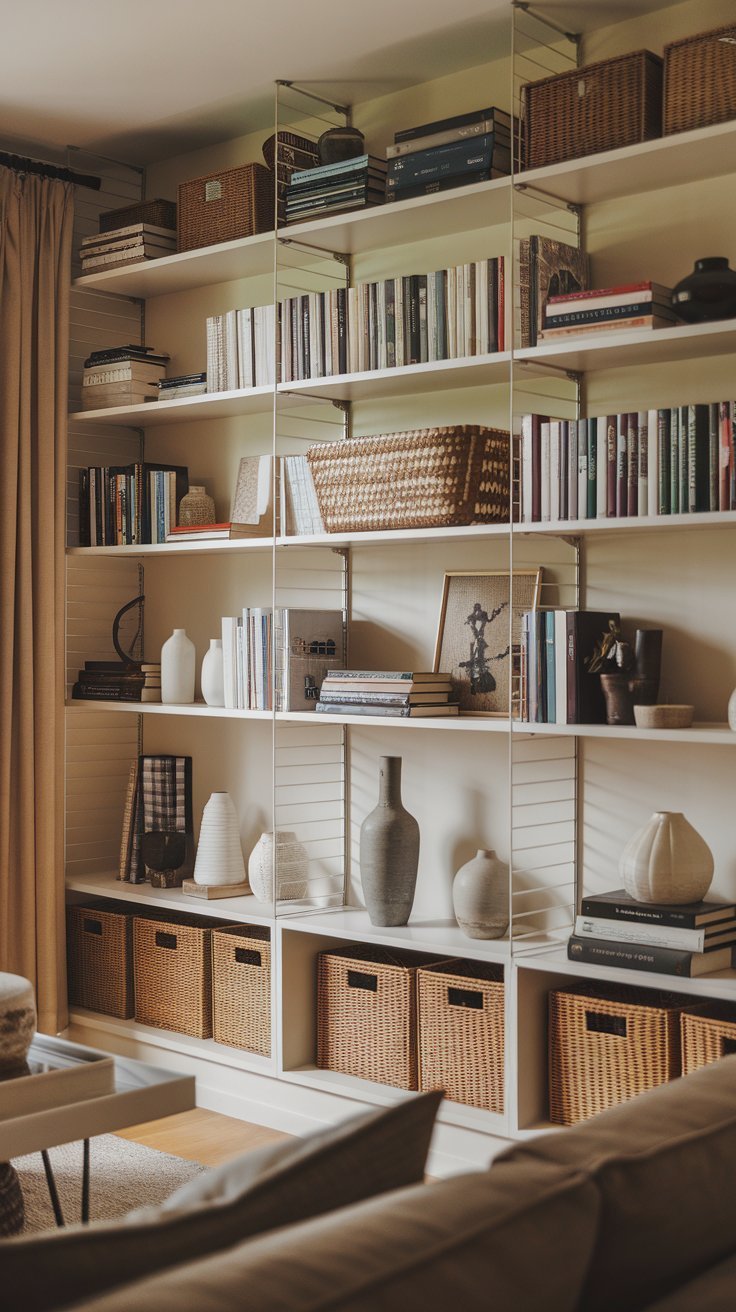
When space is tight, think up! Vertical shelving makes excellent use of your walls and adds storage without taking up floor space. Mount floating shelves or install floor-to-ceiling bookcases to store books, decorative items, and everyday essentials.
Wall-mounted shelving units can be positioned above furniture like sofas or TV stands to maximize every inch. This strategy draws the eye upward, making your living room feel taller and more spacious.
Choose shelving that matches your style—whether sleek and modern or rustic and warm. Open shelving keeps your room feeling airy while providing functional storage. Remove a few items occasionally to prevent shelves from looking cluttered.
5) Float furniture away from walls for a more open feel
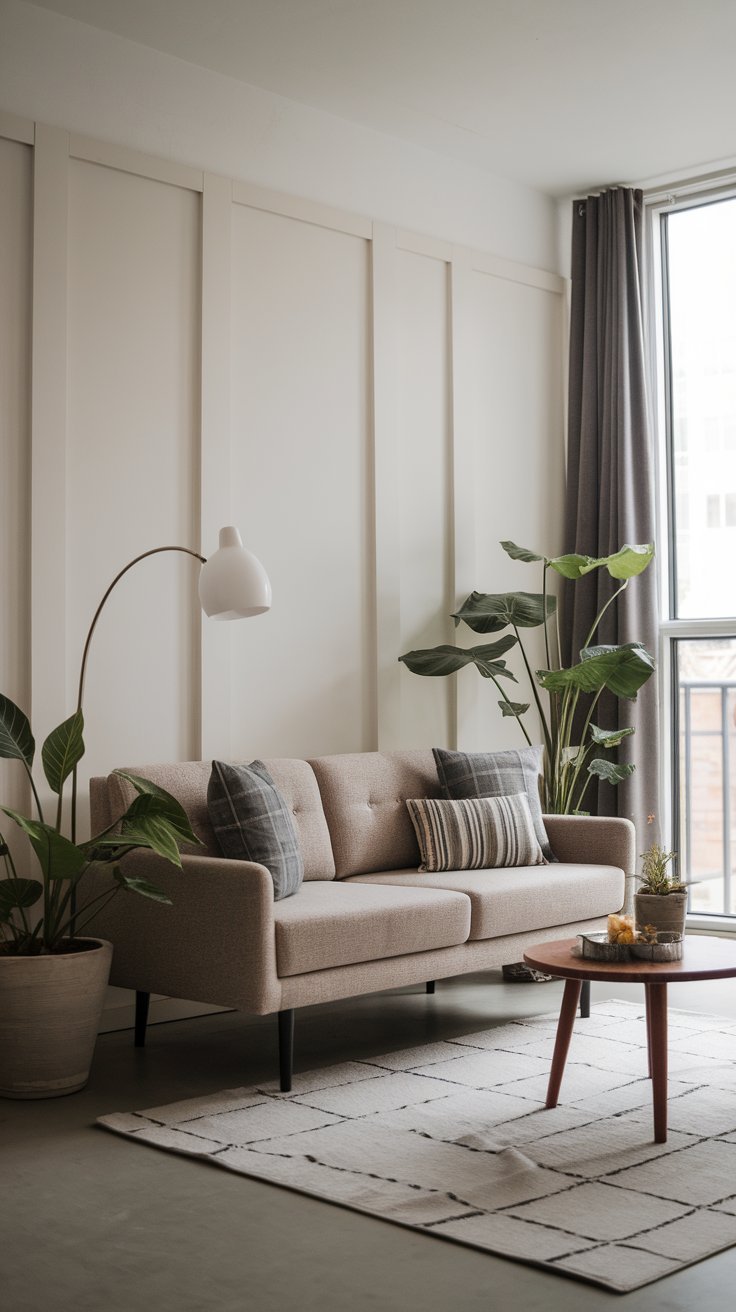
Pulling your furniture away from the walls can create a more spacious feel in a small living room. This technique helps define areas without using actual walls, as designer Linda Hayslett points out.
For small spaces, you don’t need to float all furniture. Even moving just your sofa or a pair of chairs into the room can make a difference.
Remember to maintain enough space for walkways around your floating furniture arrangement. Aim for intimate groupings that allow people to move easily through the room.
This approach works particularly well when you want to create conversation areas that feel cozy yet open.
6) Use light, airy curtains to enhance natural light
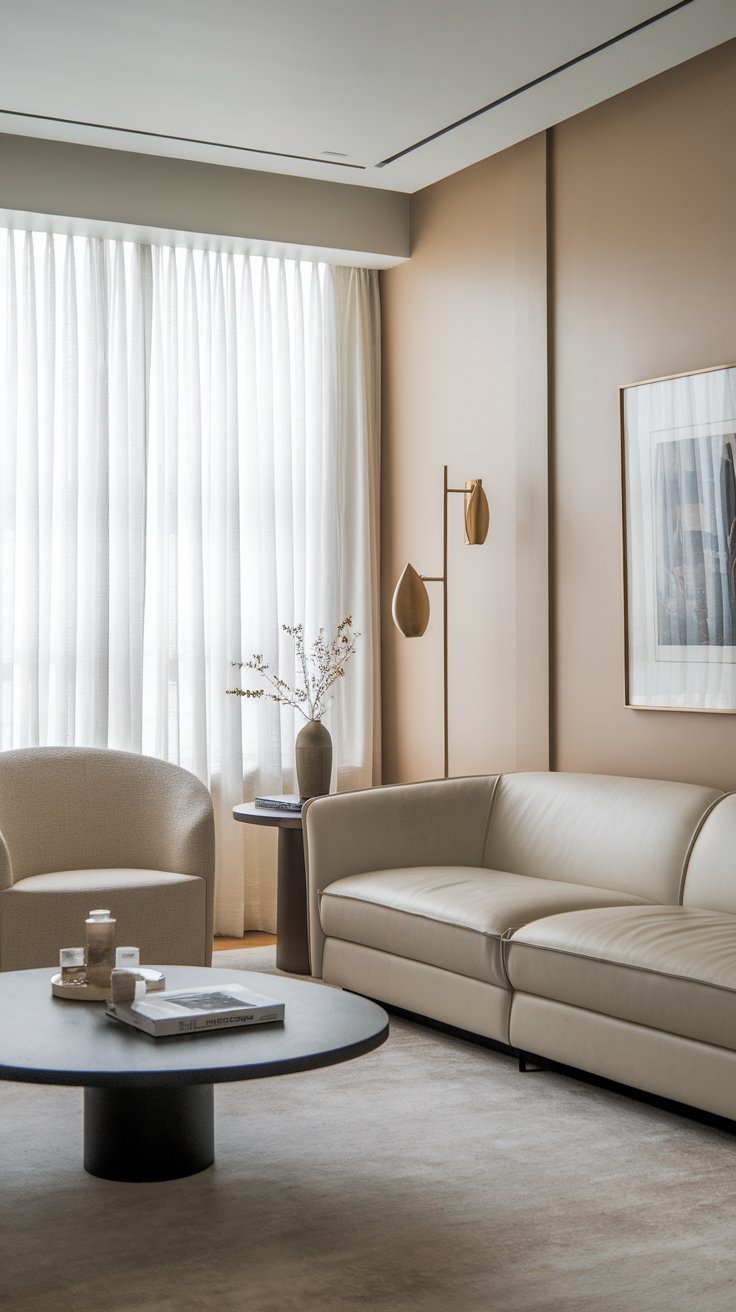
Light, neutral-toned curtains can make your small living room feel more spacious and open. Sheer fabrics are ideal as they allow sunlight to filter through while still providing some privacy.
Floor-length curtains create a sense of sophistication in compact spaces. When choosing curtains, opt for light colors like white, cream, or pale pastels that reflect rather than absorb light.
Sheer curtains diffuse harsh sunlight, creating a soft glow throughout your room. This gentle illumination makes the space feel larger and more inviting.
Hang your curtain rod a bit higher than the window frame to create the illusion of taller ceilings and add visual height to your small living room.
7) Choose a compact, sleek sofa to save space
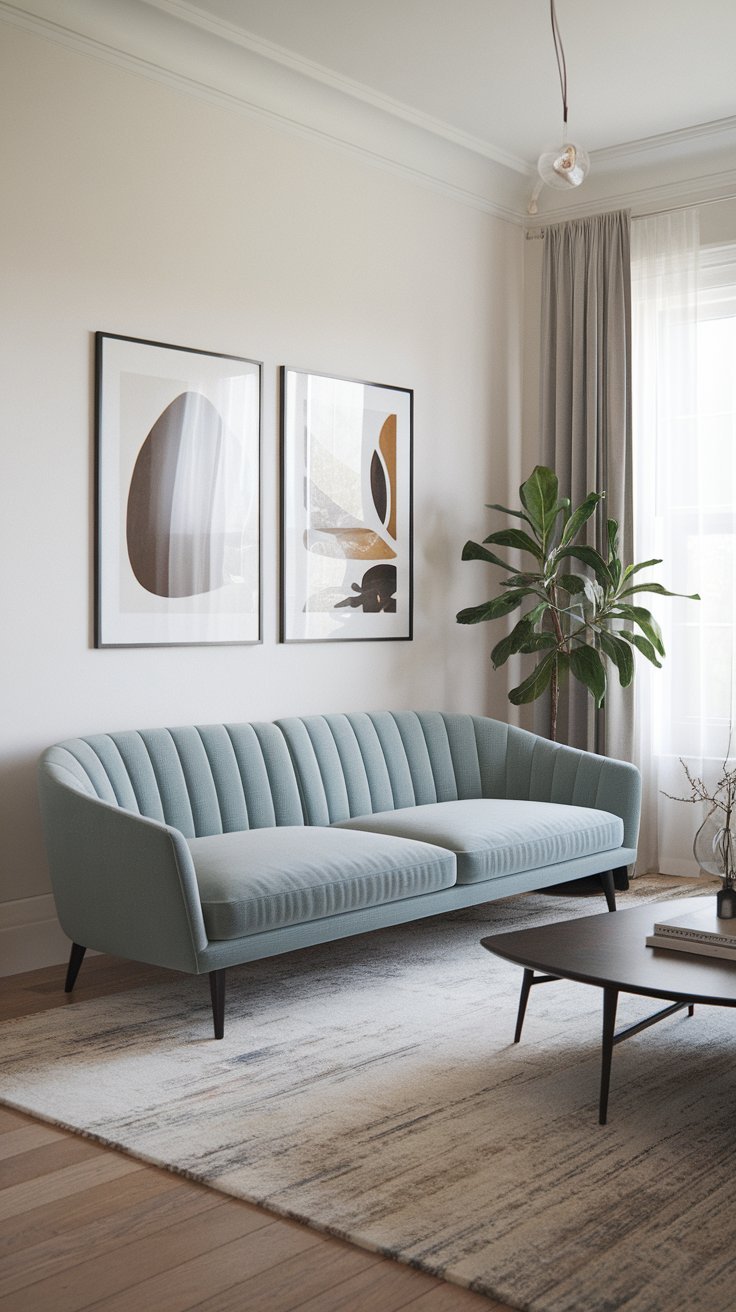
In small living rooms, your sofa choice makes a huge difference. Look for compact models with clean lines and slim profiles that won’t overwhelm your space.
Consider sofas with exposed legs rather than those that sit directly on the floor. This creates a sense of openness and makes your room appear larger.
L-shaped sectionals or modular sofas can be smart choices too. They maximize seating while fitting neatly into corners.
For extremely tight spaces, consider a loveseat instead of a full-sized sofa. Some even come with built-in storage to help keep your living area tidy.
8) Select furniture with exposed legs for an airy look
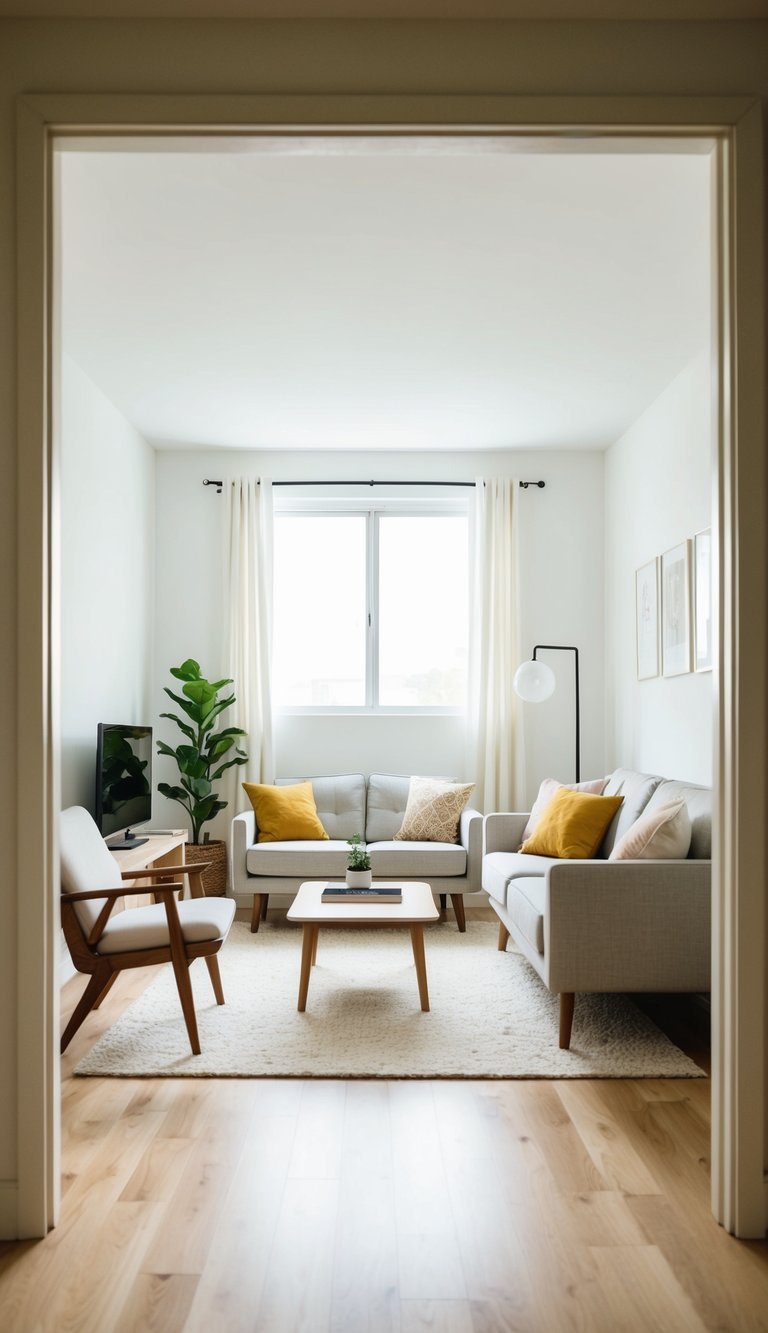
Furniture with exposed legs creates more visual space in a small living room. When you can see underneath your sofa, chairs, or tables, the room feels less crowded and more open.
Look for sofas and loveseats raised off the ground instead of pieces that sit directly on the floor. This simple change helps light flow through the room and makes your space appear larger.
Coffee tables and side tables with slim, visible legs also contribute to this airy feel. The more floor you can see, the bigger your small living room will seem.
Choose pieces with clean lines and minimal bulk to maximize this effect in your space.
9) Employ a minimalistic decor style to reduce clutter
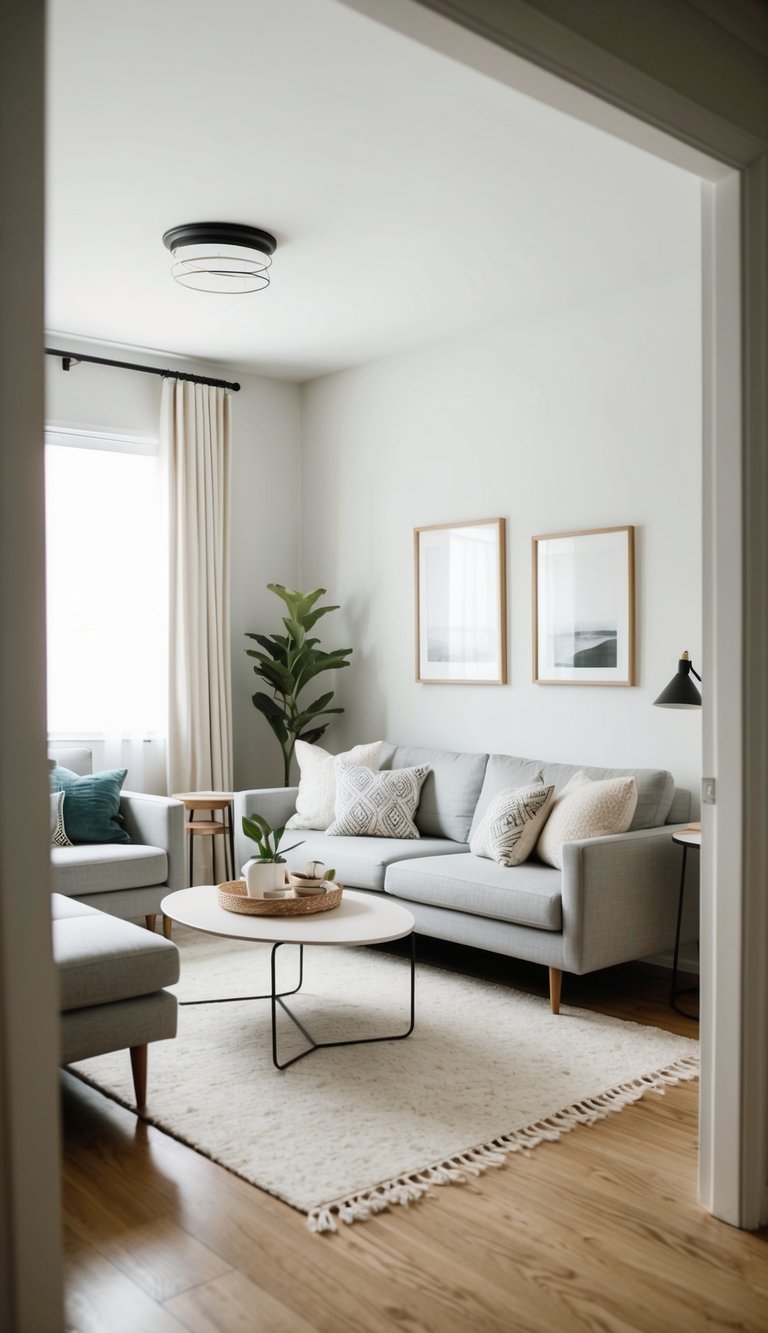
Minimalistic decor can transform your small living room by focusing on essential items and removing unnecessary clutter. Choose streamlined furniture with clean lines and avoid bulky pieces that overwhelm the space.
Limit decorative objects to a few meaningful pieces rather than filling every surface. Select items that serve a purpose or bring you joy, and donate or store the rest.
Use hidden storage solutions to keep everyday items out of sight. Wall-mounting your TV saves precious floor space and contributes to a cleaner aesthetic.
Remember that in minimalist design, empty space isn’t wasted space—it’s an intentional design choice that makes your room feel larger and more peaceful.
10) Incorporate storage solutions like built-in shelves
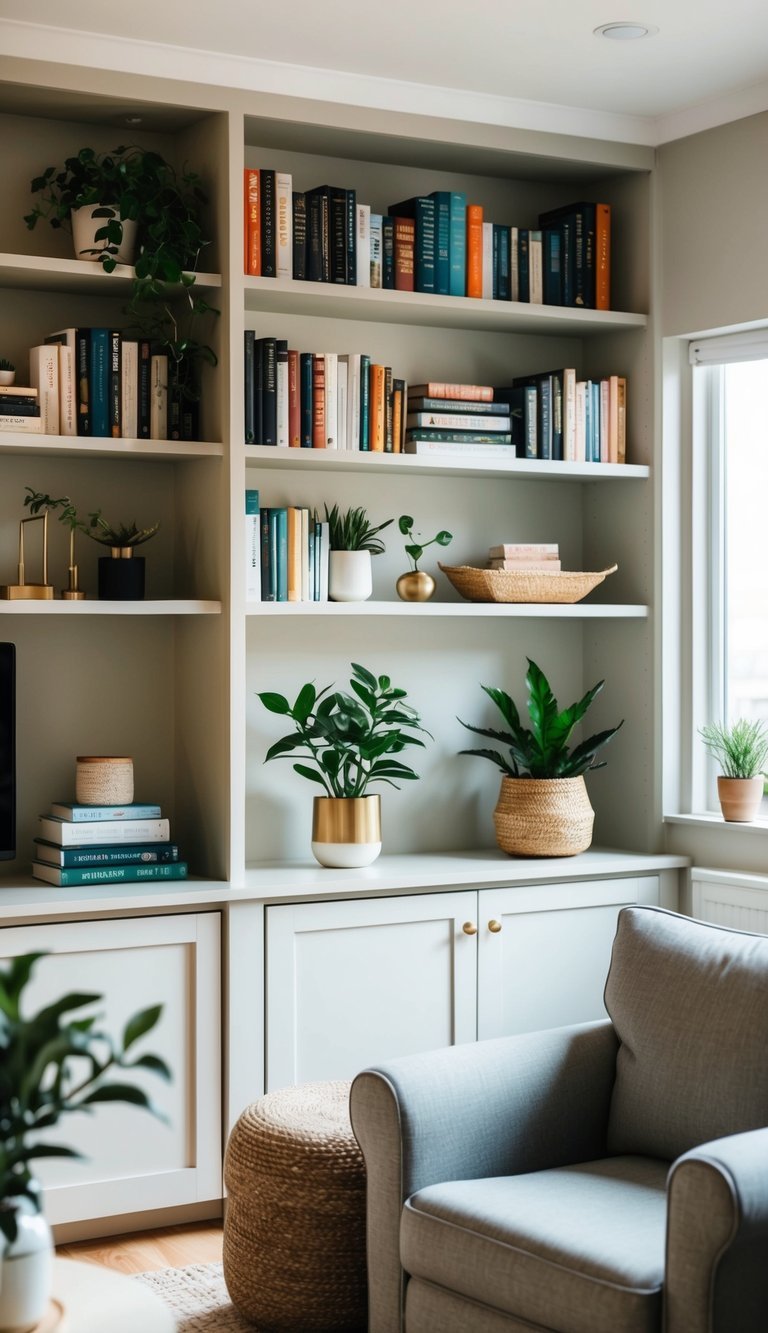
Built-in shelves maximize your small living room space while reducing clutter. They provide both open display areas for decorative items and closed storage to hide everyday items.
Consider installing floor-to-ceiling shelving to draw the eye upward and create the illusion of higher ceilings. This vertical approach uses wall space that might otherwise go unused.
You can highlight your shelves with concealed lighting to showcase special items. For smaller objects, use decorative baskets or boxes on the shelves to maintain a tidy appearance.
Built-ins around a fireplace create a cohesive, custom look while providing practical storage for your living room essentials.
11) Opt for a round coffee table to ease movement
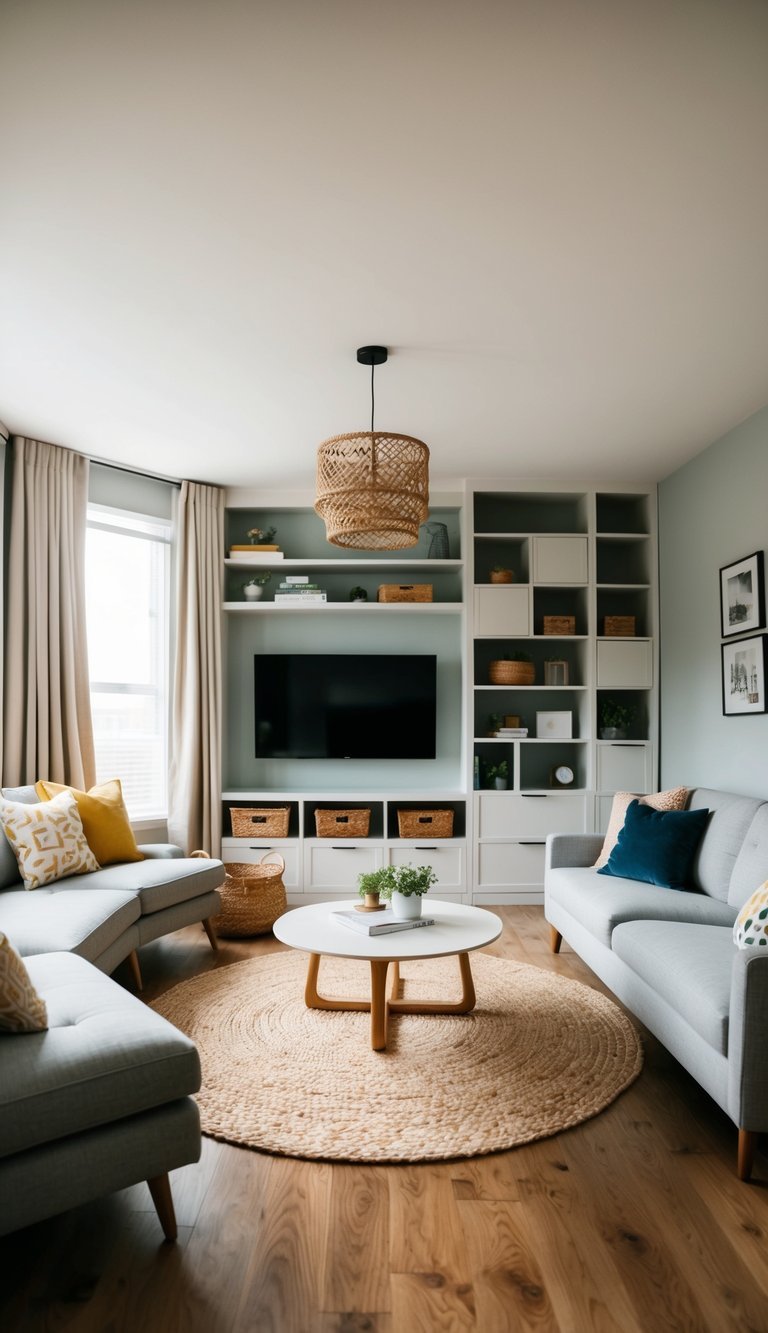
Round coffee tables are great for small living rooms because they help with flow. Their circular shape lets you move around them more easily than rectangular ones.
You can place them in tight spaces without worrying about sharp corners getting in the way. This reduces the chance of bumping into edges as you navigate your limited space.
They also create a more balanced look in your room. A round table softens the appearance of all the straight lines from other furniture and walls.
When choosing size, make sure your coffee table is within 4 inches of your sofa seat height for the best function and look.
12) Choose a statement rug to define the space
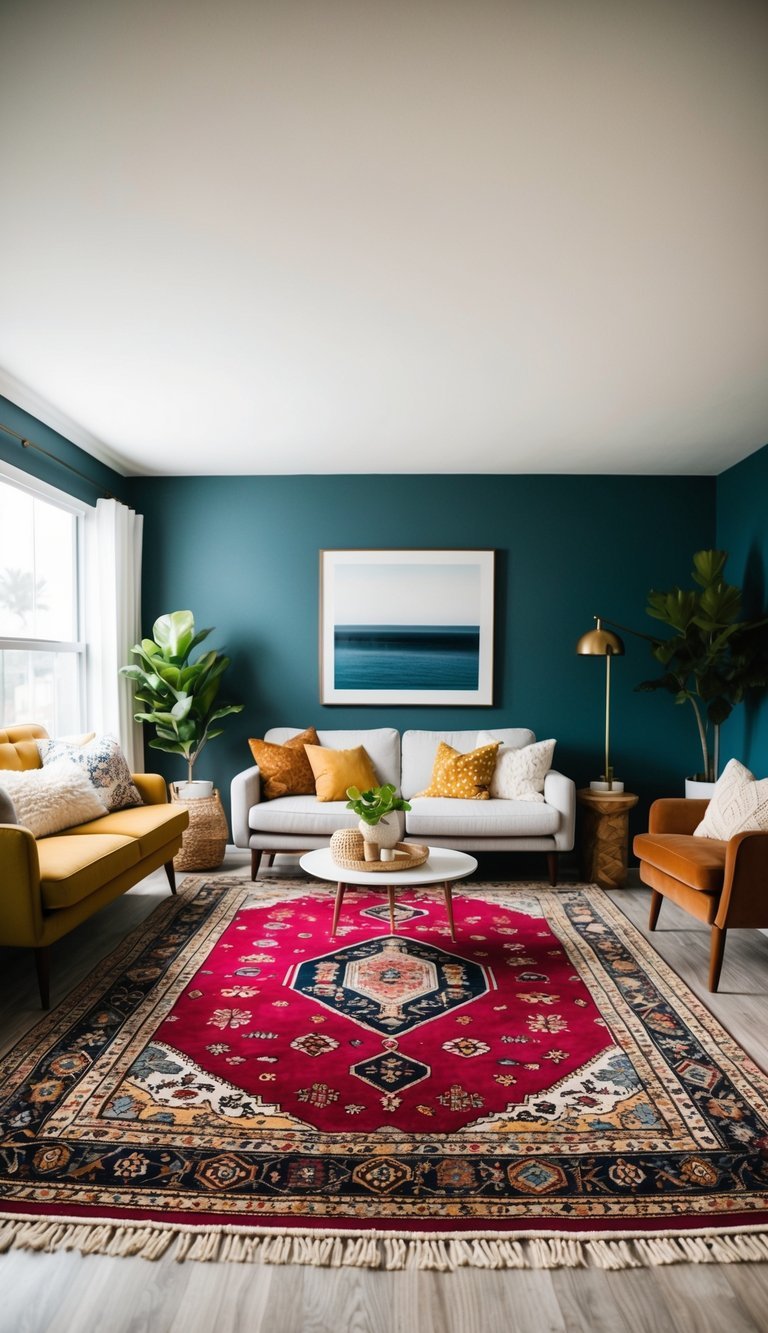
A statement rug can transform your small living room by clearly defining the seating area. Pick a rug that pulls one or two colors from your existing decor to create visual harmony.
Make sure to get the right size. Your rug should be large enough that at least the front legs of all furniture pieces can rest on it.
In a tiny space, a bold pattern or bright color can add personality without taking up any extra room. This creates a focal point and draws attention away from the limited square footage.
The right rug anchors your furniture arrangement and makes the room feel more intentional and complete.
13) Hang artwork higher to draw the eye upward
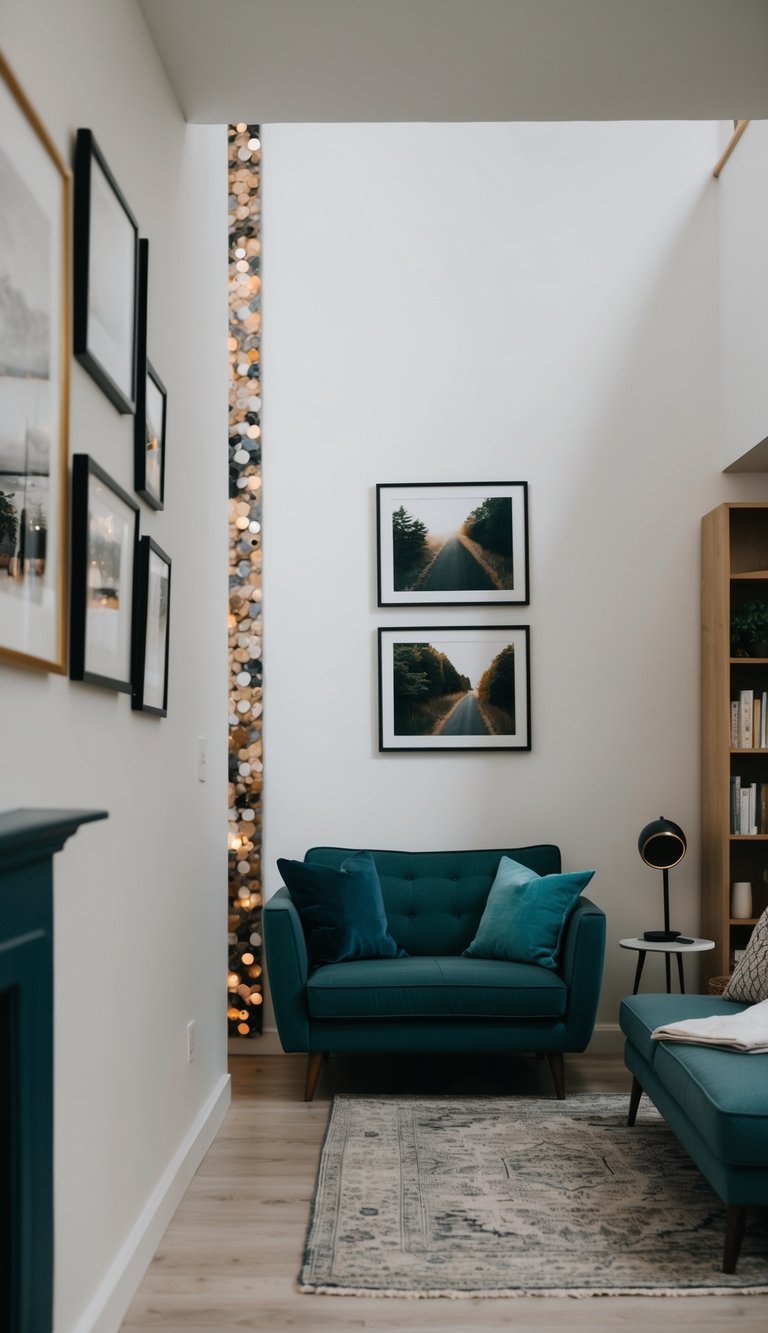
Placing artwork slightly higher on your walls can make your small living room feel larger. When you hang art above eye level, it draws your gaze upward and creates the illusion of more vertical space.
This technique works especially well with tall, narrow pieces that emphasize height. Try hanging a series of vertical frames to create a visual path that leads the eye up toward the ceiling.
Pair this approach with good lighting that illuminates your higher artwork. This combination tricks the mind into perceiving the room as taller than it actually is, making your compact living area feel more spacious and open.
14) Use nesting tables instead of bulky side tables
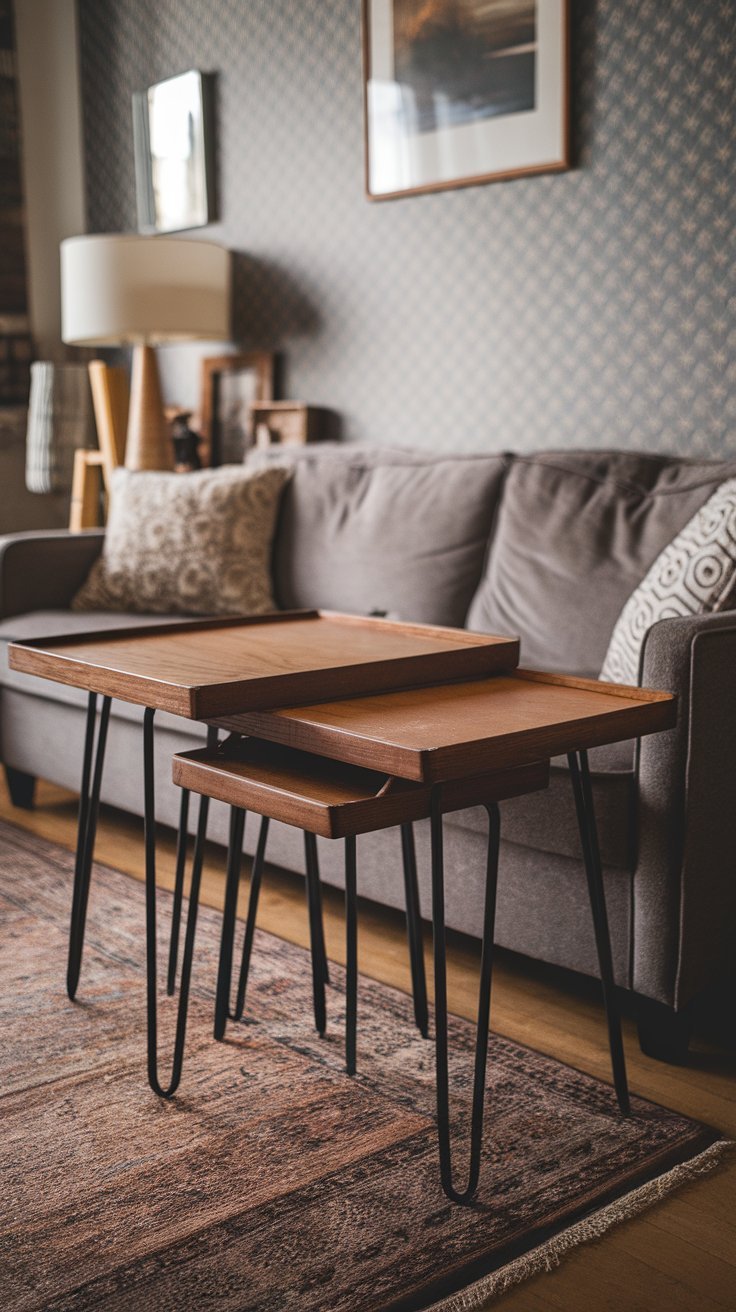
Nesting tables are a smart choice for small living rooms. They take up less space than traditional end tables while still giving you places to put drinks and other items.
These versatile tables can be separated when you need more surface area for guests. According to search results, some sets can split into up to six small tables, ensuring everyone has somewhere to put their drinks.
When not in use, nesting tables tuck neatly together, freeing up valuable floor space. They’re also practical because they can be viewed from all sides in your room setup.
For proper function, keep your nesting tables within 4 inches of your sofa seat height for comfortable reaching.
15) Install wall sconces to free up floor space
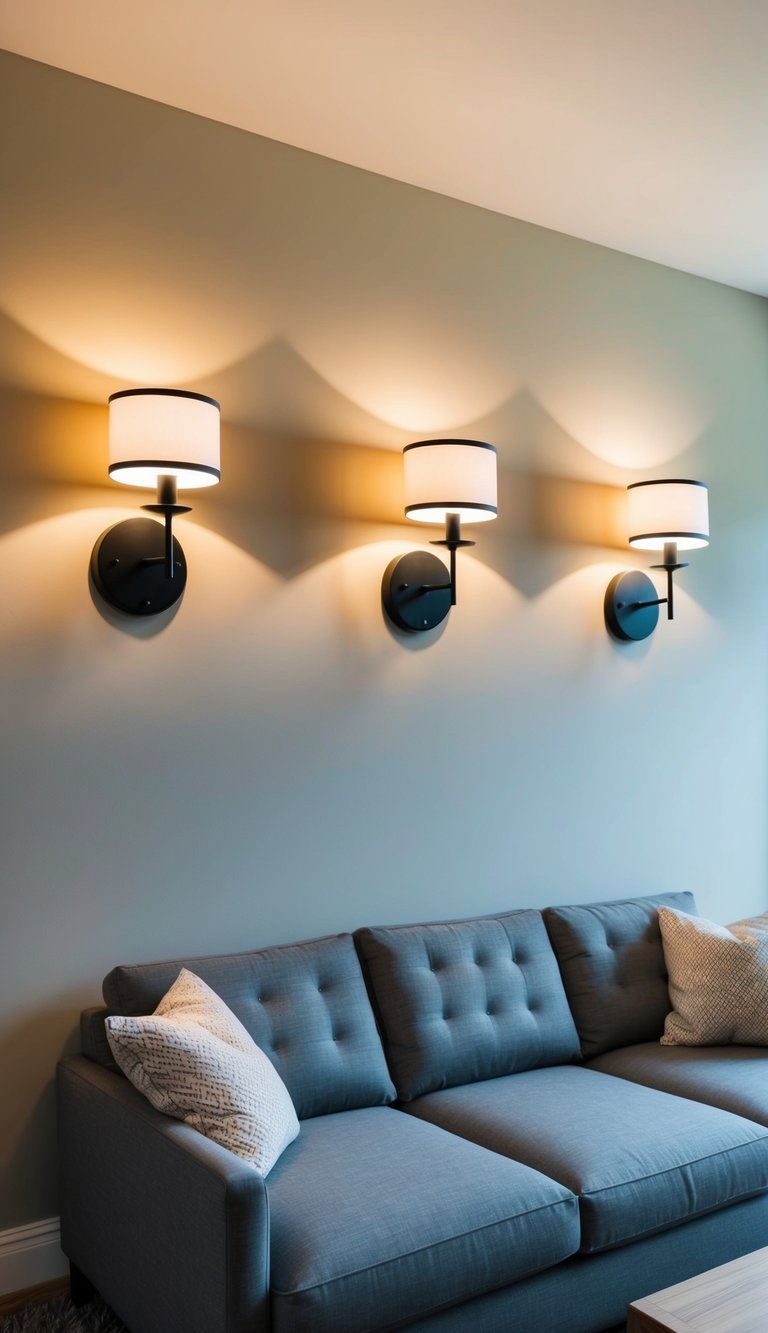
Wall sconces are a smart choice for small living rooms. By mounting lights on your walls, you free up valuable floor and table space that would otherwise be taken by lamps.
Place sconces about 6 feet apart for balanced lighting. If your room is larger, consider spacing them 8-10 feet apart.
These fixtures provide both function and style to your space. They can add ambient lighting while serving as decorative elements on your walls.
For maximum space efficiency, choose sconces that don’t protrude too far from the wall. This gives you more walking space while still providing the light you need